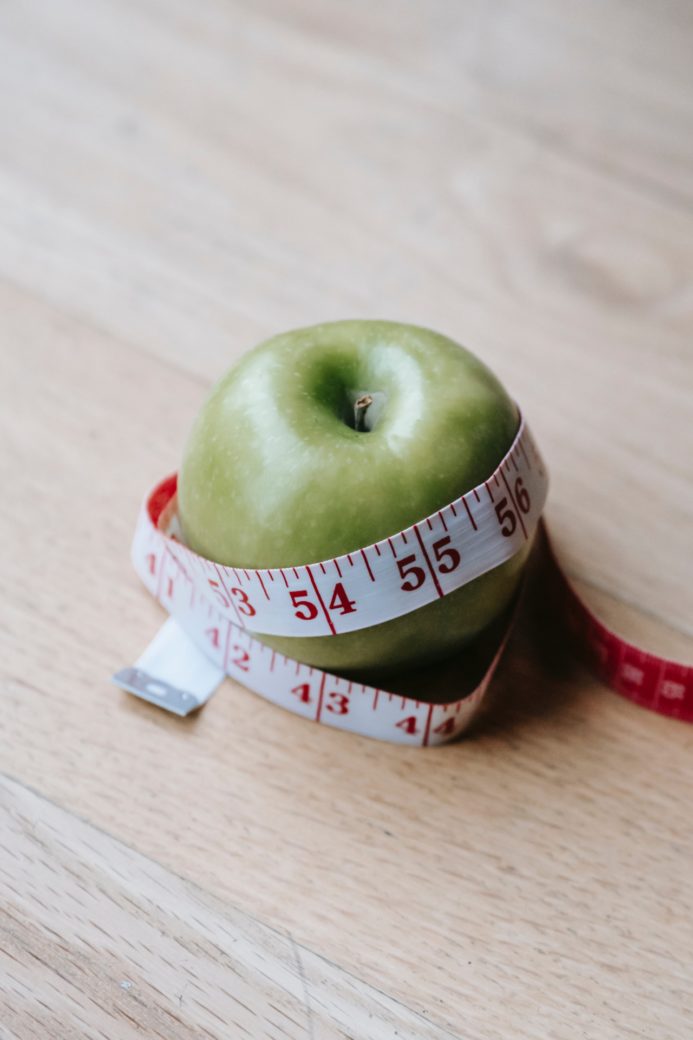Imagine being able to know exactly how many calories your body needs to maintain, lose, or gain weight. This knowledge would empower you to take control of your fitness journey, making it easier to achieve your goals. That’s precisely the power that understanding your Total Daily Energy Expenditure (TDEE) can provide. In this blog post, we’ll dive into the world of TDEE, exploring its importance, how it’s calculated, and how you can use a TDEE calculator to fine-tune your diet and exercise regimen for optimal results. So strap in and get ready to unlock the secret to mastering your body’s energy needs.
Table of Contents
Key Takeaways
Understanding TDEE is essential for managing weight and meeting fitness goals.
A TDEE Calculator takes into account BMR, activity levels, and exercise intensity to provide an estimate of daily calorie needs.
Tracking changes in weight and activity level helps ensure accurate adjustment of the calculator’s results for successful progress towards health goals.
Understanding TDEE: The Basics
Daily energy expenditure TDEE, or Total Daily Energy Expenditure, is the total number of calories your body burns in a day, taking into account your Basal Metabolic Rate (BMR), daily activities, and exercise.
Managing your weight and achieving your fitness goals, such as losing weight, gaining muscle, or maintaining your current body weight, requires an understanding of your TDEE and lean body mass.
What is TDEE?
TDEE stands for Total Daily Energy Expenditure, which represents the total number of calories burned in a day, including your Basal Metabolic Rate (BMR), daily activities, and exercise. Your BMR is the energy your body requires to function at rest, and it represents a significant portion of your TDEE. To calculate TDEE, you need to determine your BMR and multiply it by an activity multiplier, which accounts for the energy you expend during physical activities and exercise.
You might be wondering what a calorie is and how many calories you need daily. A calorie is a unit of measurement. It describes the amount of thermal energy needed to increase the temperature of one kilogram of water by 1 degree Celsius. TDEE takes into account various activity levels, including very intense exercise, to estimate daily energy expenditure.
Why is TDEE Important?
With knowledge of your TDEE, you’re better equipped to manage your calorie intake and exercise routines to meet your weight loss, muscle gain, or weight maintenance goals. Comprehending your TDEE aids in determining the accurate count of daily calorie consumption, thereby facilitating informed decisions about diet and exercise plans.
For example, if you want to lose weight, you can use your TDEE to create a calorie deficit by consuming fewer calories than your body needs to maintain its current weight. On the other hand, if you’re looking to gain muscle, understanding your TDEE can help you determine how many additional calories you need to consume to promote muscle growth.
Ultimately, being aware of your TDEE is a powerful tool in helping you achieve your fitness goals.
Components of TDEE Calculation

Calculating your TDEE is a multi-step process that takes into account several key components, including your Basal Metabolic Rate (BMR), daily activity levels, and exercise intensity.
TDEE offers a more precise estimation of your daily calorie needs due to its consideration of all these factors, as opposed to solely relying on BMR.
Basal Metabolic Rate (BMR)
Your Basal Metabolic Rate (BMR) represents the number of calories your body needs to maintain its basic physiological functions while at rest. In other words, it’s the minimum amount of energy required to keep your organs functioning when you’re not engaging in any physical activity. BMR serves as a foundational component in TDEE calculation, as it forms the basis of your total daily energy requirements.
There are several formulas that can be used to calculate BMR, including the Mifflin-St Jeor equation. This formula takes into account your age, weight, height, and gender to estimate your resting energy expenditure. It’s important to note that BMR is just one piece of the TDEE puzzle, as it doesn’t account for the additional calories burned through daily activities and exercise.
Activity Levels
In addition to BMR, your daily activity levels play a significant role in determining your TDEE. This includes everything from walking to work, performing household chores, and engaging in recreational activities. To account for these energy expenditures, TDEE calculations incorporate an activity multiplier, which adjusts your BMR based on your reported activity level.
Non-exercise activity thermogenesis (NEAT) is another important factor to consider in TDEE calculations. NEAT refers to the energy expended for everything we do that is not sleeping, eating, or sports-like exercise. By taking into account both exercise and non-exercise activities, TDEE provides a more comprehensive picture of your daily energy expenditure.
Exercise Intensity
Finally, the intensity and duration of your exercise activities also impact your TDEE. More intense and longer exercise sessions will result in a higher TDEE, as your body requires more energy to fuel these activities. To account for exercise intensity in TDEE calculations, an Exercise Activity Thermogenesis (EAT) multiplier is used.
By considering all of these factors – BMR, daily activity levels, and exercise intensity – TDEE calculations provide a more accurate and personalized estimate of your daily calorie needs. This information can be invaluable in helping you make informed decisions about your diet and exercise plans, ultimately enabling you to achieve your fitness goals more effectively.
TDEE Calculator: How It Works
TDEE calculators are designed to make calculating your daily energy expenditure as simple and accurate as possible. By utilizing specific formulas, personal data, and activity levels, these calculators provide an estimate of your daily calorie needs.
This section delves into the functioning of TDEE calculators and the steps required for their utilization in determining energy expenditure.
Choosing the Right Formula
There are several formulas that can be used to calculate TDEE, with some of the most common being the Mifflin-St Jeor, Katch-McArdle, and Revised Harris-Benedict equations. Each of these formulas takes into account different factors, such as age, weight, height, and gender, to estimate your basal metabolic rate and, ultimately, your total daily energy expenditure.
The selection of a formula for TDEE calculation should ideally align with your personal data and fitness objectives. For example, the Mifflin-St Jeor equation is widely regarded as the most accurate and is suitable for most individuals, while the Katch-McArdle formula may be more appropriate for those with a known body fat percentage.
Regardless of the chosen formula, the accuracy of TDEE calculations is only as good as the data provided, thus necessitating accurate and up-to-date information.
Inputting Personal Data
Once you’ve selected an appropriate TDEE formula, you’ll need to input your personal data, such as:
Age
Weight
Height
Gender
This will generate an accurate estimate of your daily energy expenditure. It’s crucial to provide accurate and current information to ensure the most precise TDEE calculation possible. If your weight or activity levels change over time, it’s essential to update your information in the TDEE calculator to maintain an accurate estimate of your calorie needs.
In addition to your personal data, you’ll also need to provide information about your activity levels and exercise habits. This information is used to adjust your BMR based on your daily energy expenditure, ensuring a more accurate TDEE calculation.
Interpreting TDEE Calculator Results
After inputting your personal data and activity levels, the TDEE calculator will provide an estimate of your daily calorie needs. This information can be used to:
Adjust your diet and exercise plans to better align with your fitness goals
Determine if you need to increase or decrease your calorie intake
Track your progress and make adjustments as needed
Plan meals and snacks that meet your calorie needs
Whether you’re aiming to lose weight, gain muscle, or maintain your current weight, the TDEE calculator can be a helpful tool in achieving your fitness goals.
Keep in mind that TDEE calculator results are only as accurate as the data you provide and should be treated as an estimate rather than an exact figure. Regularly monitoring your weight and adjusting your calorie intake and exercise regimen based on your TDEE results can help you stay on track with your fitness goals and make the necessary changes to achieve them.
Visit TDEE Calculator Learn How Many Calories You Burn Every Day
Using TDEE for Weight Loss and Muscle Gain
Now that you understand how TDEE is calculated and how to interpret the results, it’s time to put this knowledge to work in achieving your fitness goals.
This section unravels the process of using your TDEE to create a calorie deficit for weight loss or augment calorie intake for muscle gain.
Creating a Calorie Deficit for Weight Loss
To lose weight, you’ll need to consume fewer calories than your TDEE. This creates a calorie deficit, forcing your body to use stored energy (i.e., fat) to make up for the shortfall. A common recommendation is to create a calorie deficit of 15-20% below your TDEE to promote safe and sustainable weight loss.
Keep in mind that while creating a calorie deficit is essential for weight loss, it’s also important to maintain a balanced diet and engage in regular exercise to ensure optimal health and wellbeing. By monitoring your TDEE and adjusting your calorie intake accordingly, you can lose weight safely and effectively.
Increasing Calorie Intake for Muscle Gain
On the other hand, if your goal is to gain muscle, you’ll need to consume more calories than your TDEE. This calorie surplus provides your body with the extra energy needed to build and repair muscle tissue. A general guideline is to consume 5-10% more calories than your TDEE to promote muscle growth.
In addition to increasing your calorie intake, it’s essential to engage in regular strength training and weightlifting exercises to stimulate muscle growth and gain weight. By combining a calorie surplus with the right exercise regimen, you can effectively increase your muscle mass and achieve your desired physique.
Monitoring and Adjusting Your TDEE
Regular monitoring and adjustment of your TDEE is crucial for ensuring continued success as you progress on your fitness journey.
This section covers strategies to track changes in your weight and activity levels and adjust your calorie intake and exercise regimens accordingly.
Tracking Changes in Weight and Activity Level
Monitoring changes in your weight and activity level is crucial for maintaining an accurate TDEE calculation and ensuring that your calorie intake and exercise regimens remain aligned with your fitness goals. You can track changes in your weight using a scale and record your physical activity using a workout journal or fitness app.
By regularly adjusting your TDEE calculations based on changes in your weight and activity levels, you can ensure that your calorie intake recommendations remain accurate and effective in helping you achieve your fitness goals.
Fine-Tuning Calorie Intake and Exercise Regimens
Adjusting your diet and exercise plans based on your TDEE results can help you achieve your desired fitness goals. For example, if you find that your weight is not changing as expected, you may need to modify your calorie intake or exercise regimen to better align with your goals.
By monitoring your progress and making the necessary adjustments to your diet and exercise plans, you can ensure that you stay on track with your fitness goals and continue to make progress toward achieving your desired results.
Common TDEE Calculator Misconceptions
This section aims to debunk some common misconceptions about TDEE calculators, focusing on their accuracy and limitations.
Understanding these misconceptions can help you make informed decisions about your fitness plans and ensure that you’re using TDEE calculators effectively.
TDEE Calculator Accuracy
While TDEE calculators can provide a general estimate of your daily energy expenditure with an accuracy range of 10%, provided that users report their activity levels accurately, they are not always 100% accurate. Factors such as individual differences in metabolism, lifestyle, and other factors that can affect energy expenditure can impact the accuracy of TDEE calculators.
It’s important to keep in mind that TDEE calculators are designed to provide an estimate, not an exact figure, of your daily calorie needs. By understanding this limitation, you can use TDEE calculators as a helpful tool in achieving your fitness goals while acknowledging that individual results may vary.
Limitations of TDEE Calculators
TDEE calculators do not take into consideration all factors which may influence calorie expenditure, such as hormonal imbalances or medical conditions. As a result, TDEE calculations may not be completely accurate for every individual, and users should be aware of these limitations when using TDEE calculators to inform their diet and exercise plans.
By acknowledging the limitations of TDEE calculators, you can make more informed decisions about your fitness plans and ensure that you’re using TDEE calculators effectively in achieving your goals.
Summary
In conclusion, understanding your Total Daily Energy Expenditure (TDEE) is an invaluable tool in managing your weight and achieving your fitness goals. By calculating your TDEE using a reliable calculator, providing accurate personal data, and monitoring changes in your weight and activity levels, you can make informed decisions about your diet and exercise plans to achieve your desired results. Remember that TDEE calculators are not foolproof, and individual results may vary. However, with the proper understanding and application, TDEE calculators can be a powerful ally in your fitness journey.
Frequently Asked Questions
What is the difference between TDEE and BMR?
TDEE takes into account your BMR, as well as your daily activities and exercise, whereas BMR is a measure of the energy expended while at rest.
How can I use my TDEE to lose weight?
Create a calorie deficit by eating fewer calories than your TDEE to lose weight and force your body to use stored energy (fat) to make up the difference.
How accurate are TDEE calculators?
TDEE calculators can provide a good estimate of energy expenditure, with an accuracy range of 10%, when activity levels are accurately reported.
What factors are included in TDEE calculations?
TDEE calculations factor in BMR, activity levels, and exercise intensity to determine the energy you expend every day.
How often should I update my TDEE calculations?
It’s important to consistently update your TDEE calculations if your activity levels or weight changes to ensure accurate calorie intake recommendations.









